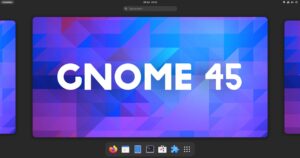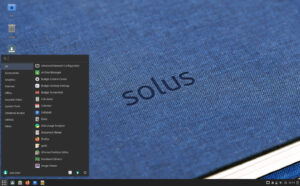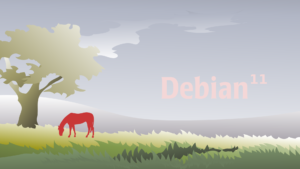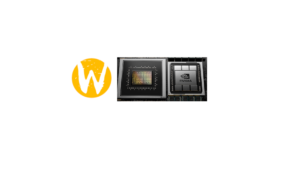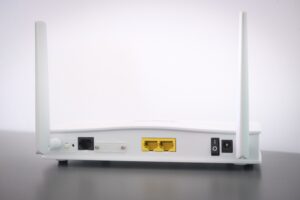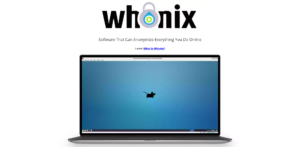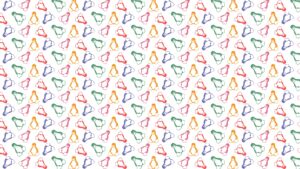“NVIDIA has once again managed to provide launch-day Linux driver support for their next-generation graphics processors. Today the NVIDIA 455.23.04 beta driver is shipping for Linux support with the GeForce RTX 3080 and RTX 3090 ‘Ampere’ graphics cards.” – Phoronix
Yes, NVIDIA released a new driver which is NVIDIA 455.23.04 beta for Linux that includes support for the newest generation of RTX 3080 and 3090. Besides the RTX 3080/3090 support, there is also official support for the GeForce MX450. This Linux beta driver also adds NVIDIA VDPAU support for decoding VP9 10-bit and 12-bit streams, the base mosaic support now allows five simultaneous displays rather than three, the removal of SLI modes, support for the NVIDIA NGX update, and various bug fixes.
There is also a performance optimization in that there is device-local VkMemoryType that is host-coherent and host-visible. This new VkMemoryType should help DXVK titles like DiRT Rally 2.0, DOOM: Eternal, and World of Warcraft.
Next Gnome version will start from 40

According to Emmanuele Bassi, Gnome will leap from 3. XX to 40 and continue with point releases afterward. This is OK because GTK 4.0 will get released soon and Gnome 40 will be a big thing. In the QnA section, Bassi pointed out why Gnome wants to do this. He stated:
“Because the next version would be 3.40, and it’s a nice, round number. The 3.38 release was the 40th release of GNOME, but this discussion came too late in the cycle to effectively switch, so we can say that, if you count at zero, the next cycle would be the 40th release of GNOME. By using 40 as the base, we acknowledge what came before, and we don’t introduce a large discontinuity in the number progression, which is somewhat the point of this change.”
KDE is bringing big updates to Plasma 5.20

It looks like it promises KDE that they will bring some major updates for Plasma 5.20 next month. According to OMG Ubuntu, this new update will not only bring so many additional features but also more optimization and improvements. This new update will bring a redesigned Bluetooth, Auto-start, and User management page interface. Plasma 5.20 will also come with an improved panel, and you can set the preview mode to icon only. I like this preview mode more.
A new On-Screen Display Bubbles is coming along with new Settings app improvement, some improvements for laptop mode, and better support and optimization for Wayland. Plasma 5.2 will get released next month, and it may include some other improvements before the launch. I think this is will a cool new update.
XFCE 4.16 will come with better fractional scaling
The feature is one of several betterments the nimble desktop environment will boast in the upcoming release, alongside the switch to CSD we ferried word on back in January.
Adaptive screen handling on high-resolution displays is a basic ask of any modern desktop environment. Alas, some manage it better than others. GNOME, for instance, still only offers ‘experimental’ support for fractional scaling in Xorg sessions (though Ubuntu has patched the relevant settings into its GUI).
The latest pre-release of Xfce 4.16 carries additional scaling values in the Display module. These settings range from 100% (1x), 150% (1.5x), and 200% (2x) scaling. There’s also a ‘custom’ option for manually entering values in-between. I find 125% (1.25x) to be the sweet spot in most DEs on my 14-inch laptop.
Manjaro 20.1 released

Manjaro Linux project team developer Philipp Müller has proclaimed a new point version, Manjaro 20.1 “Mikah.” The latest release supersedes the previous Manjaro 20.0 “Lysia” and comes with more updates, improved tools, and refreshed user interfaces.
Version 20.1 has updated its default package manager, Pamac, from v9.4 to v9.5. Subsequently, it leads to an enhanced alpm error handling, improved database performance, optimized internal check dep algorithm, and internal search algorithm. Continuing the support for the ZFS file system, v20.1 has now enabled the ZFS installation by providing the needed kernel modules. Speaking of Linux kernel, Manjaro 20.1 has also replaced its previous kernel 5.6 with the latest stable kernel 5.8 to bring support for new drivers. Another major change that Manjaro has added to version 20.1 is the AUR package building. With the latest v20.1, Manjaro Linux has built packages from Arch Linux’s AUR (Arch User Repository) and install as many as possible in a single run.
You can read the full news from here.
Material Shell goes stable

That’s right, the experimental tiling shell for Gnome goes stable and now everyone can install it. The developer behind the add-on recently shared a ‘one year update’ with Linux customization fans on Reddit, announcing that the add-on is now stable and is available to install directly from the GNOME Extensions website.
Fans of the well-crafted cross between a tiling window manager and modern GNOME goodness can also learn more about it through a new website. This not only offers an “intro” the extension to potential new users but also provides a concise introduction to Material Shell, why it exists, and what makes it different from other tiling window managers.
I think the Material shell is the coolest and most modern looking, easily configurable tiling WM addon. It works with your existing Gnome desktop; it is much easy to configure and looks great out of the box. I don’t like tiling window managers for one simple reason, it’s time-consuming to set up and it is not worth it. So I’m very happy that Material Shell exists, and it is now available for everyone.
Nvidia to gain ARM for a $40B
The recent rumors panned out and NVIDIA just announced they have reached a definitive deal with SoftBank to gain Arm. It sets NVIDIA to gain Arm in a deal worth $40 billion between cash. The deal will take around 18 months to close and NVIDIA has stated their commitment to keeping Arm independent and their brand identity. NVIDIA will keep Arm headquartered in the UK and will also expand Arm’s presence there with a new AI research center. Under NVIDIA’s ownership, Arm will further expand its focus on data center offerings. NVIDIA will not be gaining Arm’s IoT Services Group.
DigiKam 7.1.0 got released

DigiKam got a new update with fresh changes and improvements. Coming after almost two months of the previous update which brought the deep-learning powered face detection with the digiKam 7.0 release. DigiKam 7.1.0 brings more improvements, application updates, and better Cannon CR3 metadata support. IPTC information interchange model compatibility has improved now with UTF-8 characters encoding. It now makes it possible to use extended charset everywhere in the legacy IPTC text containers. Besides that, we introduce a batch of queue manager plugin to apply a texture over images and this is an excellent addition to your photo management workflow while working with an extensive set of files. The said plugin also improved to fix the “hot pixels” automatically in images.
As there are hundreds of models of digital cameras available today from multiple manufactures. It is difficult to add RAW file support frequently in photo management software. RAW files are the unprocessed or minimal processed files containing direct digital camera sensor data. And you need a complex algorithm to process those. However, digiKam always tries to be up to date to support RAW files for most of the latest cameras. With this release, it improves the Canon CR3 model raw data support via the Libdaw library.
This release fixes 314 bugs already, which is massive. The team is preparing for the next point release which is digiKam 7.2.0. the next point release will include the improvement face management items which were added via Google Super code events. – Debugpoints
Wrapping up
This roundup was late, but NIXFAQ compiled the most important changes for the Linux world just for you. So far this week has been great, and we have seen some important stuff happening. Including new drivers from Nvidia. Nvidia again released new drivers with the latest support and optimization for other GPU’s and brought support for RTX 3080 and 3090. We have also witnessed some sneak peeks to upcoming releases for KDE and XFCE, and we also got some new applications and distro updates. I think this roundup brought hope and understanding of how the next week will go. So stay tuned and thanks for reading.

